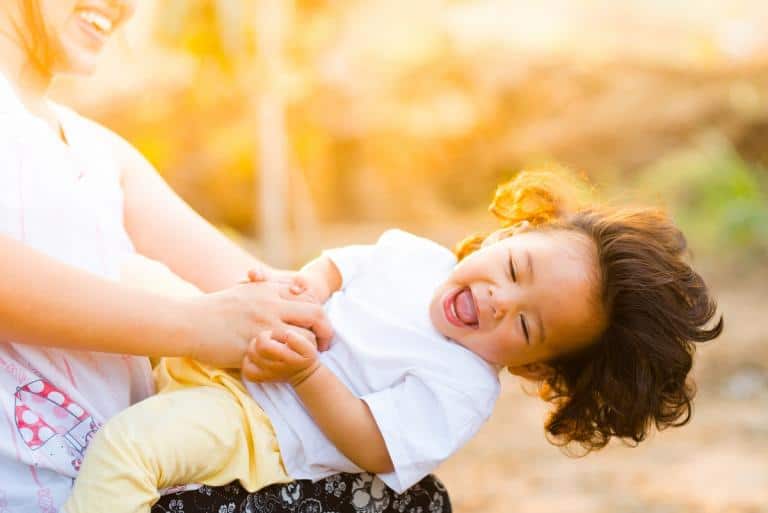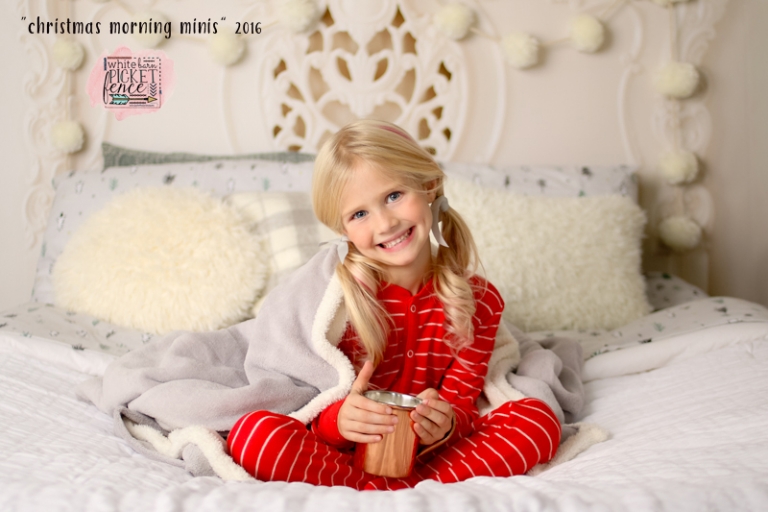Photoshoots for pets have become a trend worth noting, and our dog photography tips will give you the information you need to get the look you want. You can use these pet photography tips for all kinds of pets and shoots both indoors and outside.
Plan a List of Shots
It’s a great idea to go with the flow when working with any dog, and one of the best pet photography tips is to keep up with your subject and capture the moments as they unfold.
However, as part of your preparation as a photographer, you should plan out the images you want to take and the backgrounds you prefer.
For example, you can shoot in a wooded area with plenty of natural light or find an open meadow. Still, each of these locations will offer different opportunities for images, and you should have a base idea of what you want to capture to help guide the shoot.
Get Rid of Clutter First
Take a look around your location or studio, and remove clutter or objects that can distract pets. This also saves you time in cutting out elements during post-processing.
For instance, remove the garden hose snaking through the grass, unless you’re going to use it as props. If an object or element won’t enhance your shots, either remove it or move to a different place.
Highlight the Pet’s Personality and Focus on the Eyes
The eyes are the most expressive part of a pet’s face. If you want to create beautiful portraits, it’s important that you focus on the eyes and facial expressions.
Here are some pet photography tips for photographing the personality of your subject:
- Stay sharp and keep up with your dog
- Be very patient and wait for them to make a move
- Relax and enjoy the process! It will make the pet relax too
- Work to capture the pet owner bond by keeping your distance and watching closely
- Lie on your belly or sit on the floor, then shoot from the pet’s eye level or below.
- Wait for sparkly bright eyes, blinks, side glances, or even sleepy eyes for more dramatic and expressive shots.
- Use spot metering to keep the eyes sharp.
- Avoid using flash for a softer look.
Your timing will need to be spot on to capture beautiful images, and you’ll want to try and anticipate the next move of your subject whenever possible. Pet photography requires that you move often, and you’ll need to use your camera quickly while changing locations.
Prepare Quality Gear
When you’re working with a pet and doing pet photography, it’s essential to have reliable gear that won’t hold you back or slow down the shoot as you make adjustments.
Photographing animals means you need to make preparations for a variety of different situations, and your pet subject won’t wait for you to catch up.
Camera
A digital camera will work best for pet photography, and a few lenses on hand will allow greater versatility during a shoot. For taking pictures of your own pet, you can also use your iPhone or another smartphone.
Lens
A wide-angle lens provides a broader perspective of the frame in pet photography, whereas a zoom lens allows you to shoot from close and afar. Using a zoom or telephoto lens for pet photography also lets you shoot from a safe distance, especially if the subject feels uncomfortable or threatened.
In your pet photography kit, you’ll want to start with a 70-200mm f/2.8 lens and work to find the right camera settings for the background and environment where you’re working. Using the back button focus feature on your camera can also help save time and ensure sharper shots.
If you’re working outside, lighting gear isn’t necessarily needed, but you should have standard lighting gear for working in a studio environment that you’ll need to adjust to a lower level to suit the pet.
Lighting
You can use natural light which is essential for good pet photography, and to capture that, you’ll want to make sure you work with your pet on a bright but not overly sunny day. The best equipment here will be easy to carry and maneuver while also working well with natural light.
The fur can reflect and shine in full sunlight, so one of the best pet photography tips you can follow is to choose a day with the most even light possible and avoid working in areas where you’ll be dealing with lots of spotty shadows.
It would be better to find the right time of day where the light is ideal, and this will make sure that the photo you take will need minimal processing later. Natural light is especially important for a pet with darker fur.
Waterproof Equipment
You might also want to include a weatherproof camera bag as part of your setup, and waterproof clothing is also a good idea. You can take some of the dogs’ toys that squeak or make noise, and treats can help the pet warm up to you and your camera quickly.
Avoid Flash
Flash is bright and this can be unnerving, particularly for small animals. Direct flash can also make pets nervous or scare them into hiding, making it more difficult for you to pose them.
If the pet is light-colored, the harshness of flash can wash out a pet’s feathers or fur. It is also better to avoid flash for animals in tanks, as the glass can reflect the flash, and consequently, create an unsightly white hotspot. The same goes for pets in metal cages as flash can make metal appear white.
You can bring a softbox in case you need to bring in more light for an indoor shoot. Use a reflector to bring out details in underexposed areas and highlight shadows.
Try Various Shooting Modes
Shooting in burst mode allows you to take a succession of images from the pressing of the shutter speed. For instance, throw a squeaky toy near the animal, and then shoot in burst mode as the pet follows the toy.
Another way to catch the perfect moment is to use the continuous focus mode, which lets the lens focus on the pet’s face as it moves.
Freeze the Action
Photographing an animal at play is an excellent way to highlight their personalities. However, action shots can also be one of the most challenging parts of the photo shoot. Set a fast shutter speed for a blurred background effect and shallow depth of field.
To freeze the moment with action shots, fast shutter speed can give you the right exposure, especially when you’re shooting outdoors or the pets are in action. You can open the aperture to let more light reach the sensor.
Include the Owner
Aside from a pet’s classic portrait, you can also join the photo session. For this kind of shot, use a shallow depth of field to keep things in the center of the frame sharp. In this way, you can also ensure that you focus on the eyes.
Use Alternate Perspectives
It’s much easier to get stuck in a rut and forget about pet photography shots that are a bit more creative and unusual. Even if you don’t want to go crazy with different setups, just changing the perspective to give your pet photography a more quirky and individual look can have a significant impact.
The most compelling images will capture your pet within a landscape that is dynamic and full of light. Choosing a unique angle, getting lower to the ground, or capturing your pet interacting with the landscape around them creates a powerful image.

Relate to the Pet and Don’t Shy Away from Close-ups
It’s always a good idea to try and make friends with the pets you work with as the results will show up in the images you capture with your camera. This kind of session demands a calm demeanor and the willingness to speak softly, move more deliberately, and maintain a relaxed persona.
It also helps to have one person giving the pets a command instead of several people and to go with whatever the animal decides to do at that moment.
It’s often difficult to get a good close-up shot, but the effort is well worth the photo you take of their cute face. Close-ups are a great way to increase the aesthetics of your pet while still capturing their personality, and to get a pet to stay still; you’ll have to figure out how to get them comfortable with you and your camera.
Work on Backgrounds
When working with a pet, it’s essential to get down to their eye level to create the perfect shots that showcase their personality. People are generally used to seeing shots of animals from above; however, you can get a much cuter look when you take the shot at or below their eye level. You might have to lie on your belly to reach this eye level, but it’s a surefire way to get a smile out of your pets and see their expressions.
One of the tips to follow is to pay attention to the background in your photo. Clear up any clutter shown on the ground, and give your subject plenty of room to spread out. Dogs often like to play with a toy or two, and the right toy makes all the difference when it comes to bringing out their personality.
The right background or setting can have a similar effect, and pet photography has no strict rules when it comes to choosing a location.
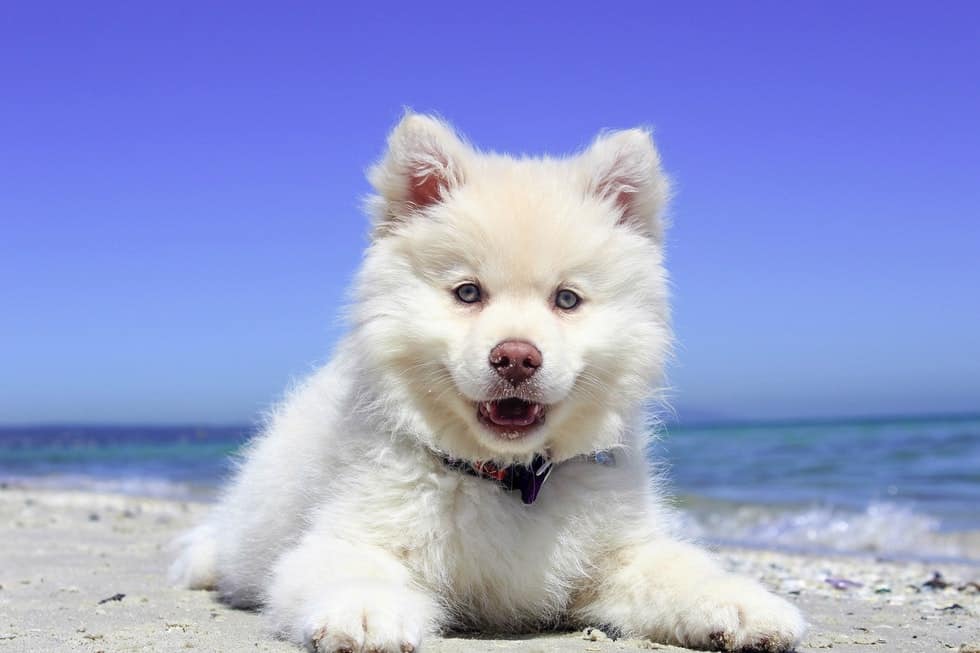
Photo by Lum3n Licensed Under CC0
To really bring out your dog’s fun personality, even more, you can also use props during your shoot, such as:
- Their favorite toys, or some you’ve brought
- Favorite treats
- Leaves, wood, and other dog safe items found in nature
Capturing a close-up of the dog’s eyes is an excellent way to get a compelling photo or portrait, and you can even get this shot at a dog show with the right lens.
Taking Photos of Black Dogs
For black canines, you’ll want to schedule your shoot for a cloudy day for more even lighting and fewer shadows. Avoid using a flash, and if it’s sunny, consider working in a shaded area, so the background isn’t overly lit. It also works best to focus on the eyes, and you can get the subject to look at you by placing a toy near the lens. Black dogs are also ideal for silhouettes, so the hour leading up to sunset is a perfect time.
What to do When Things Don’t Work Out
Even with all of these tips, there’s a chance the photo just won’t work out, and you can’t get a dog to stay still. If you don’t get the look you’re going for in your photo, don’t be afraid to try again or change the surroundings.
Before you begin shooting a portrait, it’s a good idea to feed pets first to make them feel relaxed. During the session, use treats and toys to get their attention. As the owner, you can take a break with your pets if they seem tense.
You can try to encourage them to play, so they’re tired and will sit still, but some pets don’t like portraits. Know and remember what makes them calm and more relaxed. In this way, you can choose the perfect time for portraits.
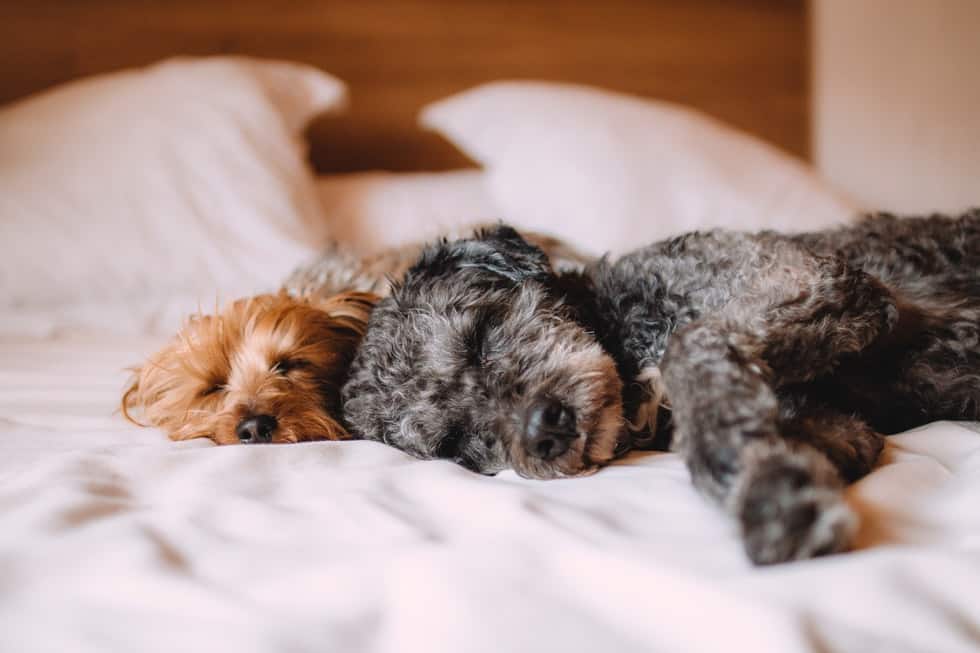
Final Tips for Photographing Running Dogs
Canines love to run and here are some photography tips to help you set up a proper photoshoot and get the best shot every time:
- Make sure the location is safe for the animal to run around
- Choose a lower point of view to see what the canine sees
- Focus tracking gets recommended, and back-button focusing is essential in some instances
- Use a more open aperture to ensure the photo has a 3D feel
- Encourage your subject to play, so you have some control over where they move
- Don’t be afraid to use panning your shot
- Use a wide-angle lens and move in close
- Try a telephoto lens for a different perspective
- Say commands quietly and calmly.
- Learn to move slowly around pets while taking their images.
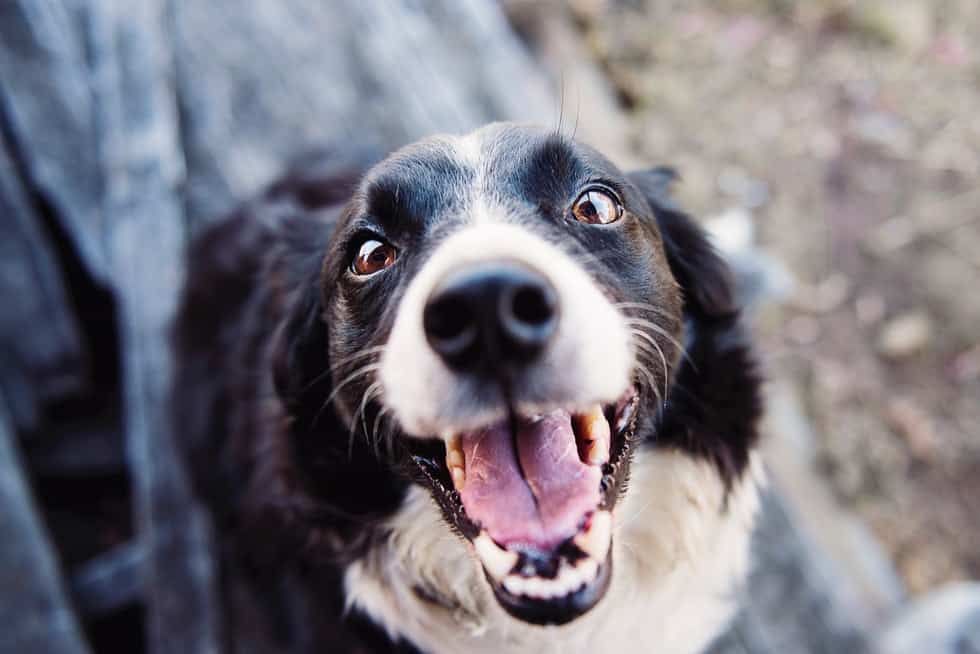
What Can I Do With My Pet Photos?
You can always publish your photos online in the hopes of selling some for money or create keepsakes from them for lasting memories or gifts. The average pet photographer makes just over $36,000 per year nationwide, so some supplemental income if often welcome.
Conclusion
Pets can let you take a range of interesting portraits. You can still pull off a fun session while trying different angles, compositions, and approaches. Improve your skills as a photographer by taking your time and shooting as many images as possible.






